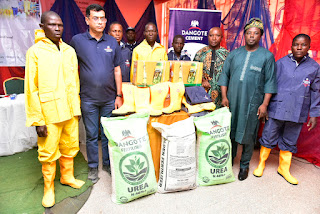By Ayomide Otitoju
Recent outbreaks of Marburg virus, Mpox, and a new strain of avian influenza (H5N1) highlight the global community’s ongoing vulnerability to pandemics. In 2024 alone, 17 major outbreaks have occurred, underscoring critical weaknesses in the world’s pandemic prevention and response systems.
A new report from the Global Preparedness Monitoring Board (GPMB), unveiled at the 15th World Health Summit in Berlin, identifies 15 key drivers of pandemic risk, categorizing them into social, technological, environmental, economic, and political factors. GPMB, a joint initiative of the World Health Organization and the World Bank, is responsible for monitoring pandemic risk drivers and advising on global preparedness.
The report warns of multiple threats, including lack of trust between nations, inequity, intensive farming, and the potential for zoonotic diseases, which emerge from human-animal interactions. It also highlights new risks beyond traditional health concerns, such as cyber-attacks, biosecurity threats, and the rapid spread of misinformation, which can exacerbate pandemic crises.
“The next pandemic won’t wait for us to perfect our systems,” cautioned Joy Phumaphi, GPMB Co-Chair and former Botswana Minister of Health. “We must invest now in resilient and equitable healthcare systems to withstand future challenges.”
While the report emphasizes the interconnectedness of pandemic risks, it also offers a roadmap for reducing global vulnerability. Strengthening health systems, prioritizing social protections, and ensuring equitable access to healthcare services are critical to safeguarding the most vulnerable populations. Furthermore, the report advocates for collaboration across human, animal, and environmental health sectors to mitigate risks and enhance preparedness.
H.E. Kolinda Grabar-Kitarović, GPMB Co-Chair and former President of Croatia, stressed the need for immediate action: “We have a narrow window of opportunity to rethink global preparedness and assess risks that extend well beyond the health sector. Vigilance, adaptability, and collaboration must define our response.”
The report urges policymakers to regularly review and adapt pandemic prevention plans, learning from COVID-19 but not solely relying on its blueprint. Future resilience will depend on robust investments in research, technology, and equitable healthcare infrastructure.
As the global community becomes more interconnected, the report calls for a collective responsibility in pandemic preparedness, stressing that the next crisis will require coordinated action across borders and sectors to protect the world’s population.












